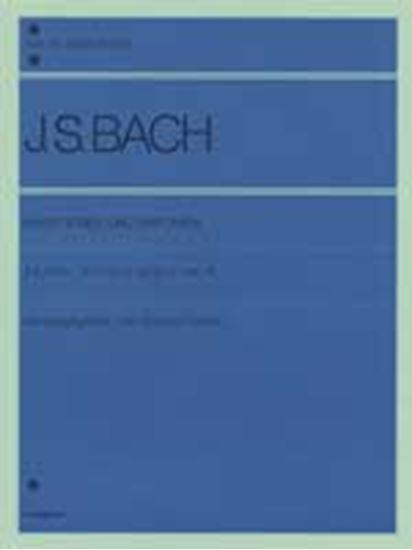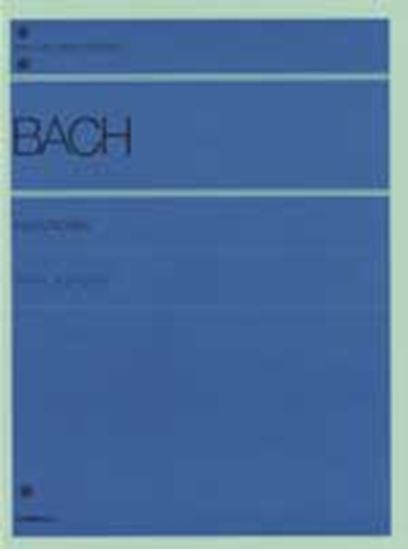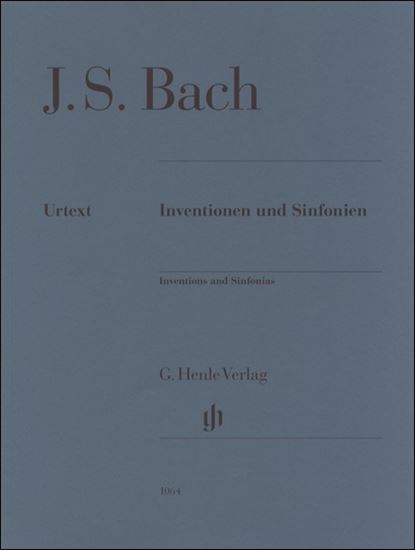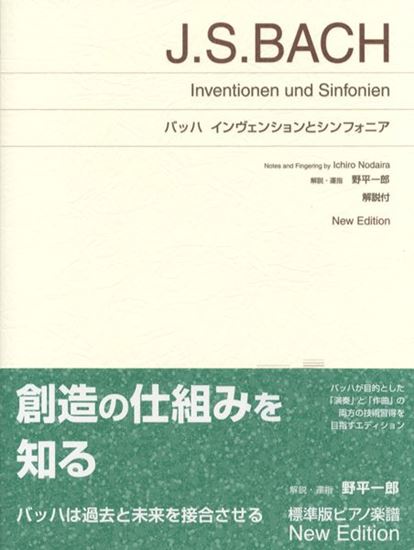Bach, Johann Sebastian : Sinfonia Nr.9 f-moll BWV 795
Work Overview
Genre:pieces
Total Playing Time:1 min 50 sec
Copyright:Public Domain
Commentary (3)
Author : Takamatsu, Yusuke
Last Updated: September 18, 2020
[Open]
Author : Takamatsu, Yusuke
F minor, 4/4 time.
Similar to No. 3, the piece is constructed using triple counterpoint, where the subject is combined with two counter-subjects. The subject, presented by the middle voice at the beginning, expresses a sigh-like character through its rests and descending seconds. Furthermore, counter-subject 1, placed in the bass voice, is based on the "passus duriusculus" (a chromatic descent by a fourth), which was used to express suffering and sorrow. Additionally, the subject includes a tritone leap (at the beginning of measure 2), the most dissonant interval, emphasizing the lamenting character of the piece.
In the first two measures, the upper voice rests, resulting in two voices. However, from measure 3, with the subject's presentation, the upper voice takes the subject, the middle voice takes counter-subject 1, and the bass voice introduces a new counter-subject 2. Throughout the piece, the subject is presented 10 times, and in all but the opening presentation, it is consistently combined with the two counter-subjects. The piece is structured approximately symmetrically, with the 4th-5th and 7th-8th appearances of the subject occurring in a major key.
Author : Hayashikawa, Takashi
Last Updated: March 15, 2018
[Open]
Author : Hayashikawa, Takashi
The theme is consistently presented from the third measure onwards by varying the combinations of three melodies (a, b, and c) across three voices.
Score example provided by: Bärenreiter Verlag
Author : Ooi, Kazurou
Last Updated: March 12, 2018
[Open]
Author : Ooi, Kazurou
Sinfonia No. 9 in F minor
This Sinfonia is, in my opinion, musically very challenging. It is not written in a form that builds towards clear peak points; at first glance, it may seem as if the same theme repeats over and over. Performers should first thoroughly analyze this Sinfonia and construct their own dramatic narrative. For analysis, a fugue can be broadly divided into two types of sections: those where the theme (subject) appears, and those where it does not. Sections where the theme does not appear can be broadly categorized into two types: episodes and sequences, which will be discussed later.
To grasp the sections where the theme is present, performers must understand its exact boundaries. Of course, interpretations may vary among analysts, and this is not a matter of who is right or wrong. However, let us assume for this Sinfonia that the theme begins in the alto voice of measure 1 and ends on A-flat in measure 3. Let us define this shape as the theme.
The theme can then be divided into three parts:
- It begins with three eighth notes (m. 1).
- Next, another three eighth notes appear in an ascending sequence (m. 1).
- The third part ascends to its highest note like a mountain shape, then descends stepwise (m. 2).
Any other misleading theme-like figures that do not consist of the aforementioned three parts will not be considered the theme. Sections where only fragments of the theme appear will be referred to as 'Fragment of theme'.
Now, let us return to measure 1 and focus on another musical material played simultaneously with the theme. This is a material that progresses chromatically. If we designate the theme as A, then this chromatically progressing material will be B. Now look at measure 3. A completely new material appears in the bass. Let us designate this as material C.
In fact, with the exception of the first two measures, all other sections where the theme is played will invariably feature all three materials (A, B, and C) simultaneously. And these sections always conclude within two measures. Let's proceed with the analysis:
- Mm. 1-2: A, B
- Mm. 3-4: A, B, C
- Mm. 5-6: Descending episode
- Mm. 7-8: B, C, A
- Mm. 9-10: Episode
- Mm. 11-12: C, A, B
- Mm. 13-14: A, B, C
- Mm. 15-17: Ascending sequence
- Mm. 18-19: B, C, A
- Mm. 20-23: Episode
- Mm. 24-25: B, C, A
- Mm. 26-27: A, B, C
- Mm. 28-30: Ascending sequence
- Mm. 31-32: A, B, C
- Mm. 33-34: C, A, B
Let's use this analysis to shape the piece. A simple approach is to consider which of these themes has the highest tension. For instance, if you perceive the theme in measures 18-19 as having high tension, you may play it forte. Coincidentally, measures 15-17, leading up to measures 18-19, form an ascending sequence. There is no reason not to utilize this. By using this sequence and applying a crescendo, you will achieve a natural flow upon reaching measure 18. Conversely, for a softer theme, it would be advisable to apply a diminuendo beforehand.
PTNA & Partner Channel Videos(3items)
Sheet MusicView More
Scores List (42)

カワイ出版

(株)ヤマハミュージックエンタテインメントホールディングス

(株)全音楽譜出版社

(株)全音楽譜出版社

(株)ドレミ楽譜出版社

(株)音楽之友社

(株)全音楽譜出版社

(株)音楽之友社

(株)音楽之友社

(株)ドレミ楽譜出版社

(株)ドレミ楽譜出版社

(株)ドレミ楽譜出版社

(株)ドレミ楽譜出版社

ヘンレー

ヘンレー

カワイ出版

(株)渓水社

(株)音楽之友社

(株)全音楽譜出版社

(株)エー・ティ・エヌ

(株)全音楽譜出版社

カワイ出版

(株)音楽之友社

(株)音楽之友社

ヘンレー

ヘンレー

(株)学研プラス


















